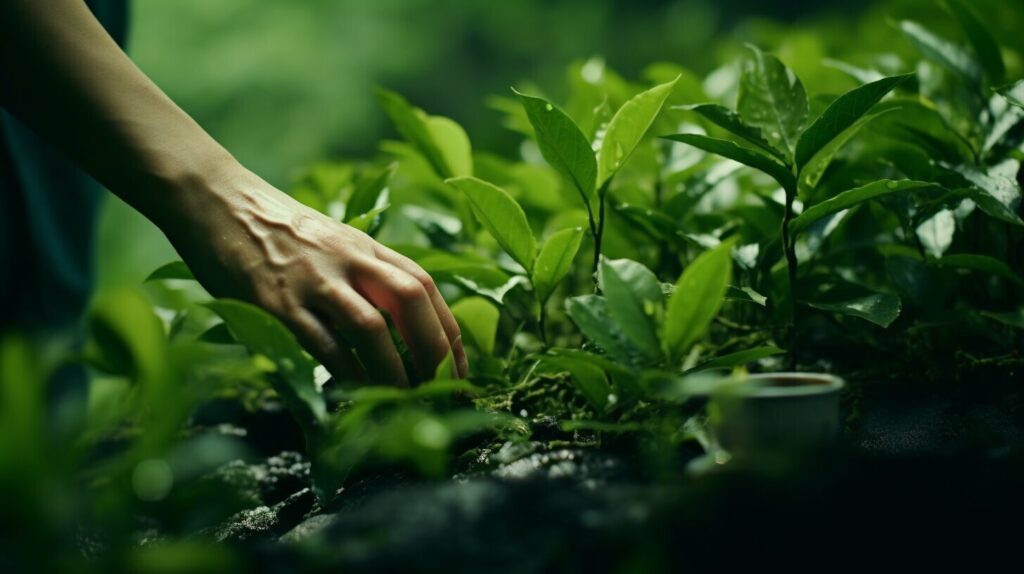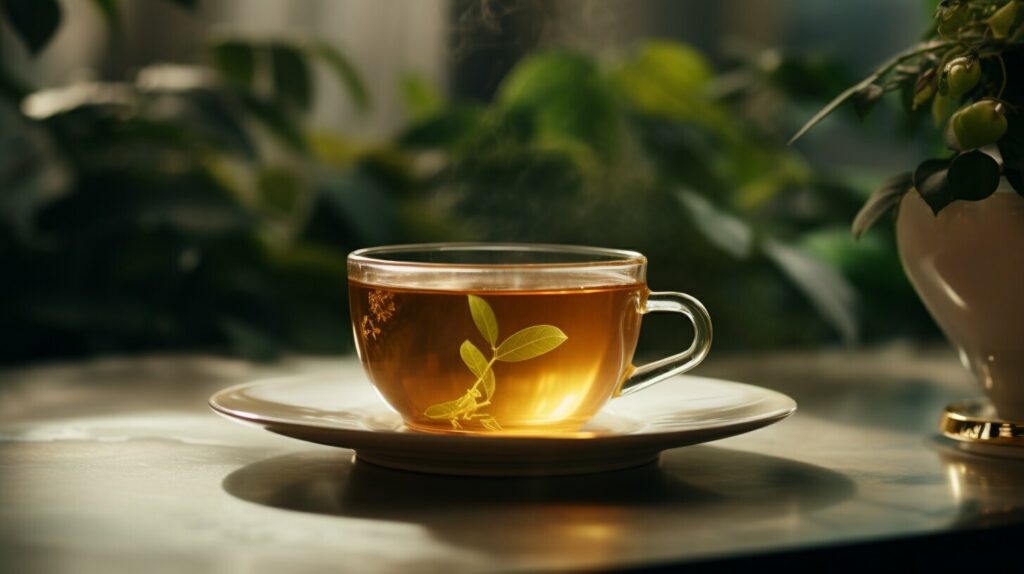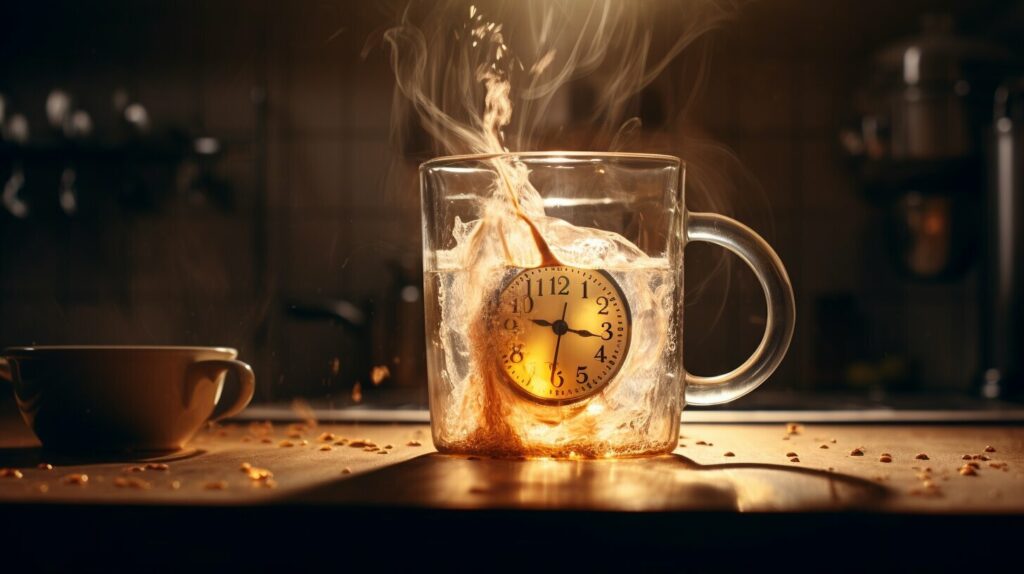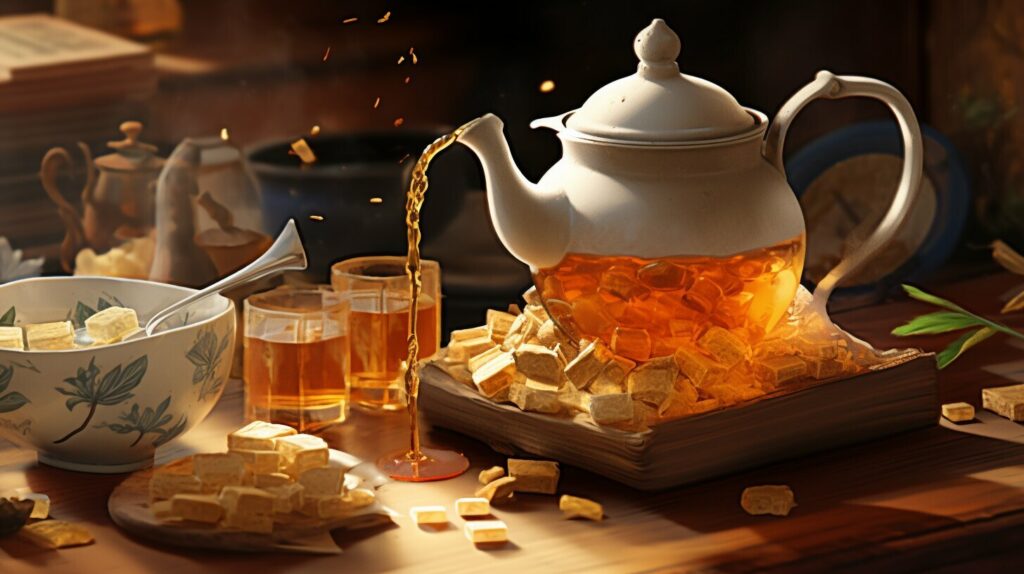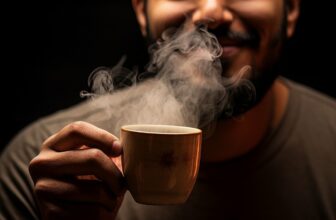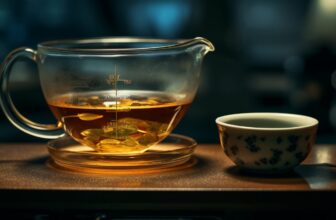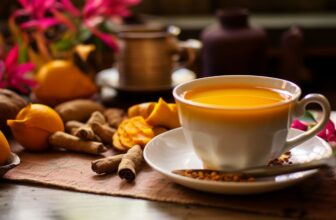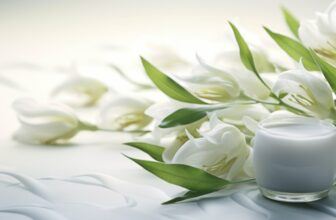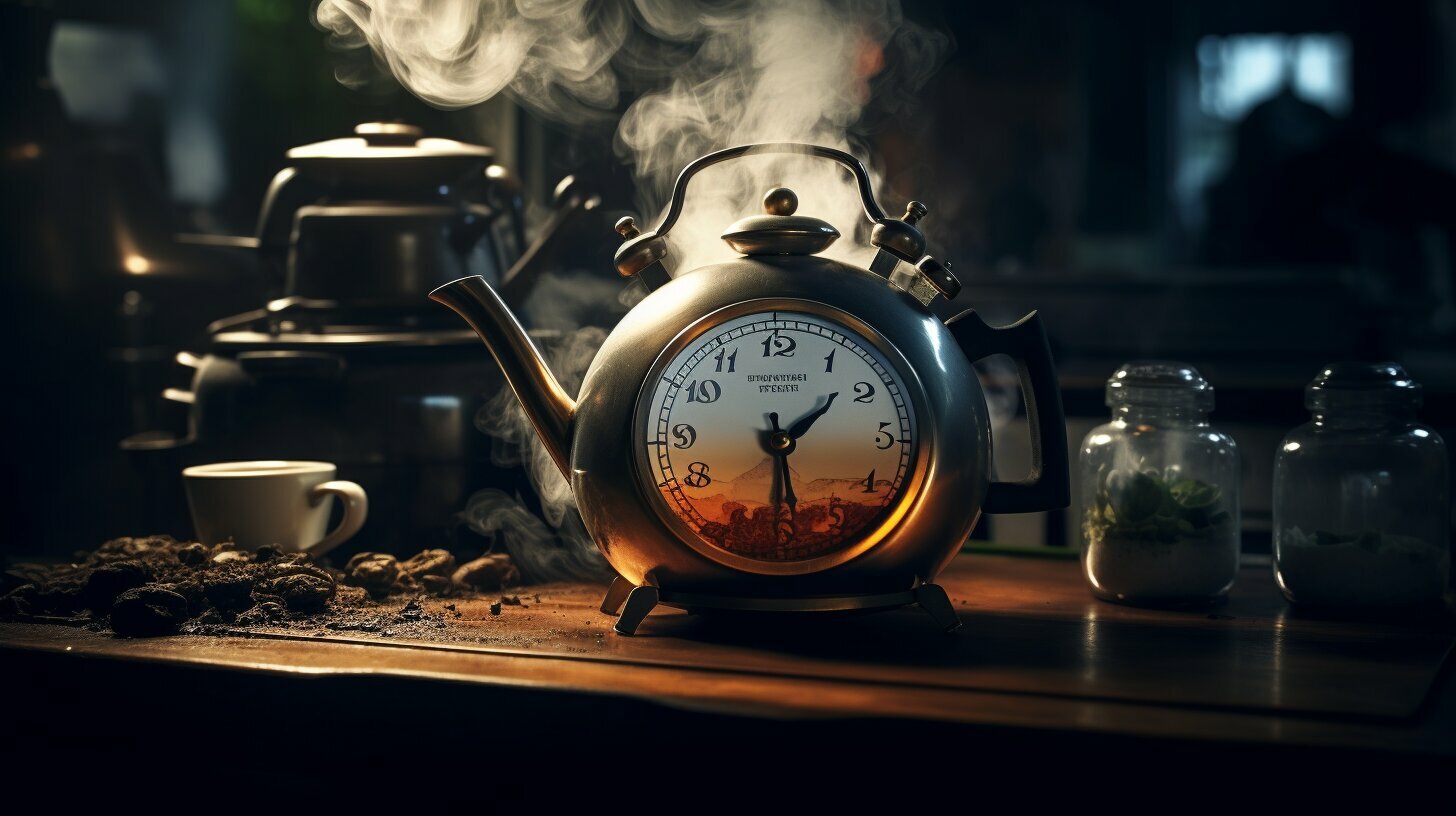
When it comes to making tea that is stronger and more flavorful, using the right ingredients and techniques is key. By following a few simple steps, you can elevate your tea experience and enjoy a cup that packs a punch.
Start by selecting high-quality loose tea leaves. Avoid using tea bags, as they often contain stale tea leaves that result in a weaker brew. Loose leaf tea ensures freshness and allows the flavors to fully develop.
To enhance the aroma and prevent a drop in water temperature, pre-warm your pot or cup. This simple step will make a noticeable difference in the strength of your tea.
Pay attention to the tea-to-water ratio. For full-leaf teas, use two grams of tea per 150 milliliters of water. Using a roomy infuser will allow the tea leaves to expand and infuse properly, resulting in a stronger cup of tea.
Different teas require different water temperatures for optimal brewing. Darker teas, such as black and oolong teas, benefit from hotter water around 95 degrees Celsius. Green teas, on the other hand, should be brewed at a lower temperature of around 60 degrees Celsius to avoid bitterness.
Let the tea steep for the desired strength. It’s important to find the right balance, as steeping for too short a time will result in a weak brew, while steeping for too long may make the tea bitter. Experiment with different steeping durations to find your perfect cup.
For an elevated and visually appealing tea experience, consider serving your strong tea in a wine or sherry glass. This not only adds a touch of elegance but also allows you to fully appreciate the color and aroma of the brewed tea.
Key Takeaways:
- Use high-quality loose tea leaves instead of tea bags for stronger flavor.
- Pre-warm your pot or cup to enhance the aroma and maintain the water temperature.
- Pay attention to the tea-to-water ratio, using two grams of tea per 150 milliliters of water.
- Adjust the water temperature based on the type of tea to avoid bitterness.
- Experiment with steeping times to find the desired strength.
Choosing the Right Tea Leaves
To enhance the flavor and maximize the boldness of your tea, it’s essential to start with the right tea leaves. High-quality loose leaf tea provides a richer and more satisfying taste compared to tea bags. Loose leaf tea allows the leaves to fully unfurl during the brewing process, resulting in a more robust and potent cup of tea.
When selecting your tea leaves, consider the variety and origin. Different tea types, such as black, green, oolong, and white, offer distinct flavors and strengths. Experiment with different types to find the ones that suit your taste preferences.
| Tea Type | Flavor Profile |
|---|---|
| Black Tea | Strong, bold, malty |
| Green Tea | Grassy, vegetal, delicate |
| Oolong Tea | Floral, fruity, creamy |
| White Tea | Subtle, sweet, mellow |
When brewing your tea, use a roomy infuser or teapot to allow the leaves to expand and infuse properly. This ensures that the flavors are extracted fully. Additionally, pay attention to the tea-to-water ratio. Using two grams of tea per 150 milliliters of water is a good starting point, but feel free to adjust according to your preference for a stronger or milder cup.
Expert Tip:
“The secret to maximizing tea boldness lies in the freshness and quality of the leaves. Opt for loose leaf tea and explore different tea types to find your perfect cup.”
Remember, the quality of your tea leaves plays a crucial role in the flavor and potency of your tea. So, invest in high-quality loose leaf tea and unleash the full potential of your tea-making experience.
Brewing Techniques for Stronger Tea
The brewing process plays a significant role in determining the strength of your tea, so it’s essential to master different techniques. To make your tea stronger and more flavorful, follow these steeping methods and tea strength techniques:
- Use quality loose tea leaves: Start with high-quality loose tea leaves instead of tea bags. Loose tea leaves offer more flavor and potency, resulting in a stronger cup of tea. Avoid using tea bags as they are often filled with lower-grade tea leaves that can be stale and lack robustness.
- Pre-warm your pot or cup: Before brewing your tea, pre-warm your pot or cup by rinsing it with hot water. This step enhances the aroma and prevents a drop in water temperature when you add the tea leaves, allowing for better extraction of flavors.
- Pay attention to the tea-to-water ratio: Use the recommended tea-to-water ratio to achieve the desired strength. As a general guideline, use two grams of tea per 150 milliliters of water. Adjust the amount of tea based on personal preference for a stronger or milder flavor.
- Consider water temperature: Different teas require different water temperatures for optimal flavor extraction. Darker teas like black or oolong teas generally need hotter water, while green teas are best brewed at around 60 degrees Celsius. Use a thermometer or kettle with temperature control to ensure the water is at the desired temperature.
- Steep for the desired strength: The length of time you steep your tea will impact its strength. Steep the tea for the recommended duration to achieve the desired flavor profile. Keep in mind that longer steeping times generally result in a stronger and more robust tea.
To enhance the presentation and enjoyment of your strong cup of tea, consider serving it in a wine or sherry glass. The elegant glassware elevates the experience and allows you to fully appreciate the tea’s color, aroma, and taste. Sipping tea from a beautiful glass can enhance your sensory experience and make the moment more special.
In conclusion, mastering the art of brewing tea is essential for creating a stronger and more flavorful cup. By using quality loose tea leaves, pre-warming your pot or cup, paying attention to the tea-to-water ratio, considering water temperature, and steeping for the desired strength, you can enjoy a robust and satisfying tea experience. Serve your strong tea in an elegant glassware to enhance the presentation and elevate your enjoyment. With these techniques, you can take your tea game to the next level and savor the richness of a strong cup of tea.
Water Temperature and Steeping Time
Adjusting the water temperature and steeping time can make a noticeable difference in the strength and intensity of your tea. To achieve a more robust flavor, it’s important to pay attention to these factors during the brewing process. Different teas require different water temperatures, so it’s crucial to understand the ideal range for each type.
For darker teas such as black tea or oolong tea, hotter water is needed to unlock their full potential. Aim for a water temperature between 90 to 95 degrees Celsius (194 to 203 degrees Fahrenheit) to infuse the leaves and extract the desired strength. Steep these teas for around 3 to 5 minutes to achieve a bolder taste.
On the other hand, green and white teas are more delicate and require gentler treatment. Using water that is too hot can result in a bitter taste. The optimal water temperature for green teas is around 60 to 70 degrees Celsius (140 to 158 degrees Fahrenheit). Steep them for about 2 to 3 minutes to retain their natural sweetness and subtle flavors.
When it comes to steeping time, it’s all about finding the balance that suits your taste preferences. Experiment with different durations to discover the perfect strength for your tea. Keep in mind that longer steeping times can lead to a stronger, more intense brew, while shorter times may yield a milder flavor.
Table: Recommended Water Temperatures and Steeping Times for Common Teas
| Tea Type | Water Temperature | Steeping Time |
|---|---|---|
| Black Tea | 90-95°C (194-203°F) | 3-5 minutes |
| Oolong Tea | 90-95°C (194-203°F) | 3-5 minutes |
| Green Tea | 60-70°C (140-158°F) | 2-3 minutes |
| White Tea | 60-70°C (140-158°F) | 2-3 minutes |
By following these guidelines and adjusting the water temperature and steeping time accordingly, you can effectively boost the intensity and flavor of your tea. Remember to start with high-quality tea leaves and ensure they are fresh to achieve the best possible results. Enjoy the process of exploring different brewing techniques and finding the perfect cup of tea that suits your taste preferences.
Presentation and Enjoyment
The way you present and enjoy your tea can enhance the overall experience and allow you to fully appreciate its potency. After carefully steeping your tea to achieve the desired strength, it’s time to focus on serving and enjoying it in a way that complements its robust flavor.
Consider using a wine or sherry glass to serve your strong cup of tea. This elegant choice not only adds sophistication to your tea-drinking ritual but also allows you to savor the aroma and visually appreciate the rich color of the brew. The narrow opening of a wine glass helps concentrate the aroma, intensifying your sensory experience.
If you prefer a more traditional approach, using a teacup or mug is perfectly acceptable. However, be sure to pre-warm your cup or mug before pouring in the tea. This step not only helps maintain the tea’s temperature but also enhances the fragrance, ensuring every sip is full of flavor.
For an extra touch, consider adding a slice of lemon or a sprig of fresh mint to your tea. These garnishes not only add a burst of freshness but also complement the robustness of the brew. Experiment with different flavors and find the combination that best suits your taste preferences.
Remember, the presentation and enjoyment of your tea is just as important as the brewing process itself. By taking the time to serve and savor your strong cup of tea in a thoughtful way, you can elevate the overall experience and fully appreciate its potency.
| Tea Presentation Tips | Enjoyment Suggestions |
|---|---|
| Use a wine or sherry glass to serve your tea | Experiment with different garnishes such as lemon slices or fresh mint |
| Pre-warm your cup or mug before pouring in the tea | Savor each sip and pay attention to the flavors and aromas |
| Consider adding a touch of elegance with a decorative tea strainer | Find a cozy spot to enjoy your tea and create a relaxing atmosphere |
Conclusion
By following these simple steps and incorporating the right ingredients and techniques, you can master the art of making stronger tea and indulge in its robust flavors.
To make tea stronger, it is essential to start with quality tea leaves. Opt for loose leaf tea instead of tea bags, as the latter often lack freshness and flavor. Engage your senses to ensure freshness and choose teas that appeal to your taste buds.
Pay attention to the tea-to-water ratio and use a roomy infuser for full-leaf teas. For every 150 milliliters of water, use two grams of tea to achieve the desired strength. Remember that different teas require different water temperatures. Darker teas, such as black or oolong, benefit from hotter water, while green teas should be brewed at around 60 degrees Celsius.
Let the tea steep for the desired strength, keeping in mind that a longer steeping time results in a stronger flavor. Lastly, consider serving your strong cup of tea in a wine or sherry glass. The presentation plays a role in enhancing the overall enjoyment of the tea, allowing you to savor its robust flavors to the fullest.
By following these simple guidelines and experimenting with different teas, water temperatures, and steeping times, you can elevate your tea-drinking experience and create a cup of tea that is truly strong and flavorful. So go ahead, explore the world of tea, and enjoy the art of making a perfectly strong cup of tea.
FAQ
Q: Can I use tea bags to make stronger tea?
A: It’s best to avoid using tea bags, as they tend to be stale. Opt for loose leaf tea for a fresher and stronger brew.
Q: How do I choose the right tea leaves for stronger tea?
A: To enhance the flavor and potency, select high-quality loose tea leaves. They provide a bolder and more robust taste compared to tea bags.
Q: What are some brewing techniques to make stronger tea?
A: Explore different methods such as using a roomy infuser for full-leaf teas and paying attention to the tea-to-water ratio. Two grams of tea per 150 milliliters of water is a good starting point.
Q: How does water temperature affect tea strength?
A: The temperature of the water plays a crucial role in brewing stronger tea. Darker teas require hotter water, while green teas are best brewed at around 60 degrees Celsius.
Q: How long should I let the tea steep for stronger flavor?
A: The steeping time depends on your desired strength. Experiment with different times to find your preferred taste. Remember, the longer the steeping time, the stronger the flavor.
Q: Any tips for serving and enjoying strong tea?
A: Consider serving your strong tea in a wine or sherry glass for an elevated experience. Savor the aroma and taste, and appreciate the robustness of your brew.
